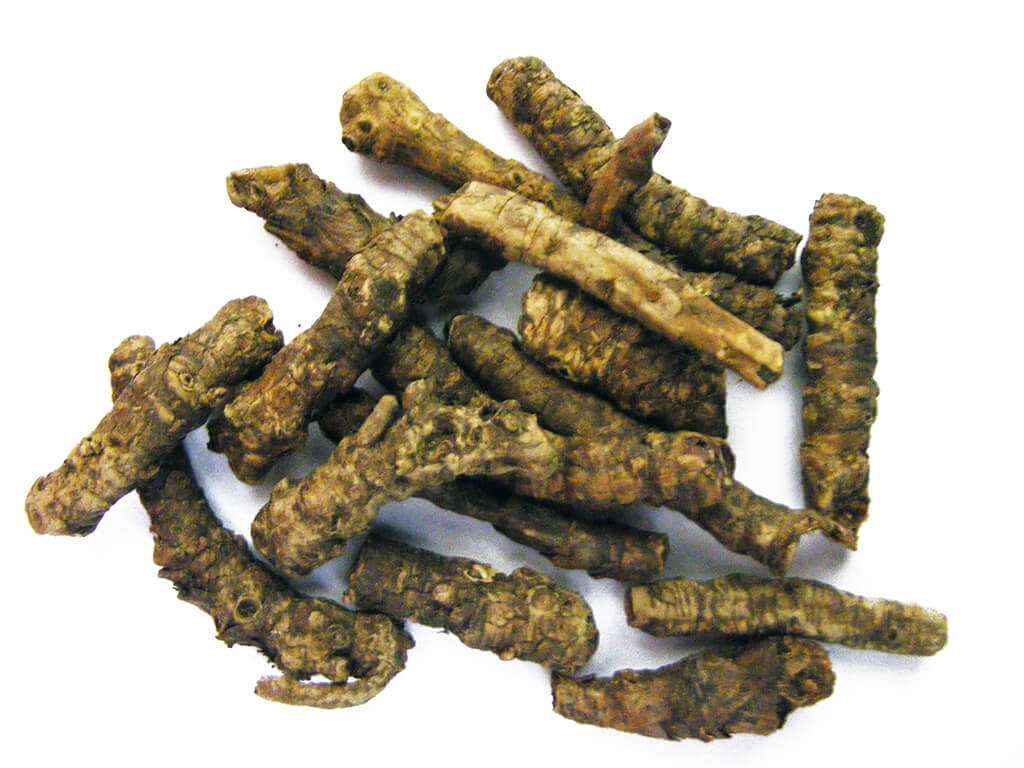Picrorhiza kurroa
Plantaginaceae
See Also WIKIPEDIA
It occurs in the Himalayas, from Kashmir to Sikkim at an elevafion of 2.700 – 4,500 m II IS naturally propagated by seeds at high altitudes

A small nearly hairy perennial herb with a woody creeping root stock: leaves spathulate. serrat, flowers white Of bluish in dense terminal spcate raceme, fruits ovoid capsules.The dried rhizome is cylindrical, deep greyish brown in colour and longitudinally wrinkled with annulations at the tip Flowering-fruiting August to November.
Rhizome contains picroside I and II and kutkoside. Picroside and Kulkosi. are Cg monoterpone iridoid glycosides and contain an epoxy oxide in the ring. The drug also contains apocyanin. Apocyanin i$ 4 – hudroxy, 5- rnethoxy acetophenone and has cholagogue action Glucosidal bitter principal named kutkin. non – bitter product narned kurrin and later identified as D – mannitol, vanilic acid, alcohol. kutkiol. sterol and kutkisterol.
Dried rhizomes
Rhizomes – is bitter, acrid, cooling, laxative. carminative. digestive. stomachic, anthelmintic, anti inflammatory, depurative, car,diotonic, galactopurifier, expectorant, antipyretic and antiperiodic. And purgative in large doses.
Rhizomes – are useful in vitiated conditions of Kept. and Rita, burning sensation, constipation,gastropathy. flatulence, colic. anorexia, verrninosis. inflammations, leucoderma. leprosy. Skin diseases. cardiac disorders. hypotension, cough, asthma. bronchitis, hiccough, feveh bilious fever intermittent fever, promote healthy pancreas. jaundice, haemorrhoids. impurity. of breast milk and general debility.